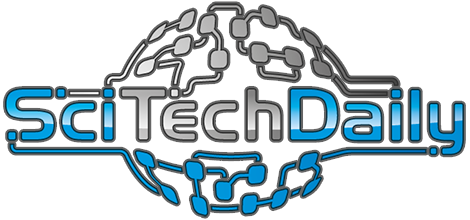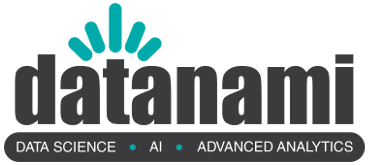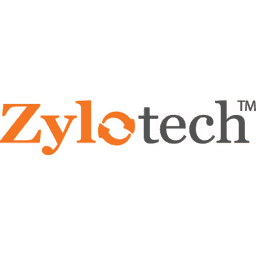JULIA IN THE NEWS
SC21 Panel on Programming Models – Tackling Data Movement, DSLs, More
News | 6 January 2022 | HPCwire
JULIA IN THE NEWS

Strong Showing for Julia Across HPC Platforms
News | 5 January 2022 | Next Platform
JULIA IN THE NEWS

Genomic Medicine 2021: (Happy To) Turn The Page
News | 4 January 2022 | Seeking Alpha
JULIA IN THE NEWS

10 Good to Know Programming Languages for Data Scientists
News | 6 November 2021 | Analytics Insight
JULIA IN THE NEWS

Entrepreneur Viral B Shah Talks About Starting Up in the Open-ource Computing Industry
News | 5 September 2021 | Your Story
JULIA IN THE NEWS

Julia DataFrames 1.0 Released With An Improved Solution For Data Analysis
News | 4 May 2021 | Analytics India Magazine
JULIA IN THE NEWS
Julia Computing Receives DARPA Award to Accelerate Electronics Simulation by 1
News | 5 Mar 2021 | HPCWire
JULIA IN THE NEWS

Julia Computing Receives Funding To Accelerate Electronics Simulation Using AI & ML
News | 5 Mar 2021 | Analytics India Magazine
JULIA IN THE NEWS

Top 8 Julia Libraries For Data Visualisation
News | 10 Mar 2021 | Analytics India Magazine
JULIA IN THE NEWS

Meet Julia: The Programming Language of the Future
News | 10 May 2021 | Analytics Insight
JULIA IN THE NEWS

Forecasting with Julia
News | 13 May 2017 | Abhi Gupta
JULIA IN THE NEWS

And Julia Went Viral
News | 30 Apr 2017 | Akram Mohammed
JULIA IN THE NEWS

Programmiersprachen: 4.6 Millionen US-Dollar für Julia Computing
News | 20 Jun 2017 | Alexander Newmann
JULIA IN THE NEWS

Meet The Co-creator of Julia Programming Language, Viral Shah
News | 02 May 2017 | Alok Soni
JULIA IN THE NEWS

An Engineering Leader Discusses the Best Programming Languages to Learn
News | 21 Jan 2020 | Alton Zenon III
JULIA IN THE NEWS

Which programming language is best for economic research: Julia, Matlab, Python or R?
News | 20 Aug 2020 | Alvaro Aguirre
JULIA IN THE NEWS

How Differentiable Programming Helps in Complex Computational Models - Viral Shah, Julia Computing
News | 29 April 2020 | Ambika Choudhury
JULIA IN THE NEWS

Julia Computing Launches JuliaSim For Scientific Machine Learning In Cloud
News | 9 Apr 2021 | Analytics India Magazine
JULIA IN THE NEWS

Julia 1.6 Released: Major Updates & Latest Features
News | 16 Apr 2021 | Analytics India Magazine
JULIA IN THE NEWS

10 Best Data Science Programming Languages for Data Aspirants in 2021
News | 21 September 2021 | Analytics Insight
JULIA IN THE NEWS

Difference Between Coding in Data Science and Machine Learning
News | 27 October 2021 | Analytics Insight
JULIA IN THE NEWS

10 Rules for Creating Reproducible Results in Data Science
News | 03 July 2017 | Andrew Tait
JULIA IN THE NEWS

Julia Founders Create New Startup to Take Language Commercial
News | 09 May 2015 | Anirban Sen
JULIA IN THE NEWS

New Programming Languages Developers Should Master in 2017
News | 16 Jun 2017 | Annie Qureshi
JULIA IN THE NEWS
The Infancy of Julia: An Inside Look at How Traders and Economists Are Using the Julia Programming Language
News | Nov 2016 | Anthony Malakian
JULIA IN THE NEWS

Fintech Funding Roundup
News | 23 Jun 2017 | Antony Peyton
JULIA IN THE NEWS

Julia Computing: Why Amazon, Disney and Uber Are Courting this Two Year Old Startup
News | 22 Aug 2017 | Anu Thomas
JULIA IN THE NEWS

Pumas-AI Looks to Democratize Access to Drug Development Tools
News | 8 September 2021 | Baltimore Fishbowl
JULIA IN THE NEWS
Julia Computing Raises $24M in Series A, Former Snowflake CEO Bob Muglia Joins Board
News | 19 July 2021 | Benzinga
JULIA IN THE NEWS
Big Data Programming Languages: What Are the Differences Between Python, R and Julia?
News | 21 Nov 2016 | Bernard Marr
JULIA IN THE NEWS
Introducing Julia – The Top Programming Language for Machine Learning Development
News | 8 Aug 2019 | Bhupinder Kour
JULIA IN THE NEWS
10 Most Innovative Startups in India That Will Rule in 2018 and Beyond
News | 11 Nov 2017 | Biplab Ghosh
JULIA IN THE NEWS
A Few Cool Tech Startups I Came Across at Boston's HUBweek
News | 03 Oct 2016 | Bob Brown
JULIA IN THE NEWS
Julia Computing Raises $4.6M from General Catalyst and Founder Collective
News | 22 Jun 2017 | BW Disrupt
JULIA IN THE NEWS
Julia: The Goldilocks Language
News | 01 Apr 2018 | Chris Stokel-Walker
JULIA IN THE NEWS

Julia Language Gets $600
News | 19 Nov 2015 | Christina Cardoza
JULIA IN THE NEWS
70% Indian Firms To Deploy AI By 2020: Intel
News | 14 Dec 2017 | CXOtoday News Desk
JULIA IN THE NEWS

Julia Programming Language: This Is The New Skill Hedge Funds Are Asking For
News | 03 Jun 2016 | Dan Butcher
JULIA IN THE NEWS

The Quantitative Skills that Will Get You a Hedge Fund Job Now
News | 7 Feb 2018 | Dan Butcher
JULIA IN THE NEWS
R and Python are Joining Forces, in the Most Ambitious Crossover Event of the Year—for Programmers
News | 06 May 2018 | Dan Kopf
JULIA IN THE NEWS
Venture Capital Deals
News | 20 Jun 2017 | Dan Primack
JULIA IN THE NEWS
Julia for Data Science
News | 10 Jan 2017 | Daniel Gutierrez
JULIA IN THE NEWS
Julia: A High-Level Language for Supercomputing and Big Data
News | 06 Sep 2017 | Daniel Gutierrez
JULIA IN THE NEWS
A Bot Lingua Franca Does Not Exist: Your Machine-learning Options for Walking the Talk
News | 25 Apr 2017 | Danny Bradbury
JULIA IN THE NEWS
Turn Into a Pro Full Stack Developer
News | 17 Jan 2017 | Danny Zepeda
JULIA IN THE NEWS
Meet Julia: Software language for faster developments in AI, medicine and robotics
News | 6 May 2021 | DataQuest India
JULIA IN THE NEWS
Tanmay Bakshi Talks Programming with Julia and Swift
News | 30 Mar 2020 | David Carty
JULIA IN THE NEWS
Deconstructing the Near Perfect Deal
News | 19 Jun 2017 | David Frankel
JULIA IN THE NEWS
Go Leads Strong Big Data Showing in IEEE Programming Language Ranking
News | 28 Jul 2016 | David Ramel
JULIA IN THE NEWS
Building the Best Data Science Toolkit - Programming Languages
News | 22 Feb 2018 | David Ramel
JULIA IN THE NEWS

Hello Julia: New Data Science Programming Language Shows Promise Despite Flaws
News | 18 Jun 2016 | David Telford
JULIA IN THE NEWS
Julia 1.6 is Feted as Next LTS Release as Team Shows off Compiler Tweaks
News | 26 Mar 2021 | DevClass
JULIA IN THE NEWS
Julia EST Le Lauréat Du Prix De La DARPA Pour créer Un Framework
News | 12 Mar 2021 | Developpez
JULIA IN THE NEWS
UMB-born Startup Launches Pharmaceutical Modeling Platform Pumas 1.0
News | 12 Aug 2020 | Donte Kirby
JULIA IN THE NEWS
Meet the Team Shaking Up Climate Models
News | 22 Jan 2021 | Doug Struck
JULIA IN THE NEWS
Intel India Eyes AI Opportunities, Plans to Develop Ecosystem
News | 31 May 2017 | Ed Nair
JULIA IN THE NEWS
Test systems add Julia support for high performance AI analysis
News | 7 May 2021 | eeNews Europe
JULIA IN THE NEWS
Creating Neural Networks in Python
News | 16 Jun 2017 | Eric Olsen
JULIA IN THE NEWS

Venture Deals
News | 20 Jun 2017 | Erin Griffith
JULIA IN THE NEWS
Julia Computing Raises $24M in Series A, Former Snowflake CEO Bob Muglia Joins Board
News | 19 July 2021 | FORTUNE Italia
JULIA IN THE NEWS

Which Are the Most Loved and Most Hated Programming Languages - 2017
News | 28 Mar 2017 | Fossbytes Staff
JULIA IN THE NEWS
Can Julia Give Us Everything?
News | 11 Nov 2016 | Gabriela Montroc
JULIA IN THE NEWS
Profesor Chileno de MIT Sloan Visita Santiago y Viña del Mar para Fomentar Avance de Startups
News | 22 Aug 2016 | Gerencia Staff
JULIA IN THE NEWS
Artificially Inside: How Intel's Search For AI Is Keeping Researchers And Developers In India Busy
News | 27 Apr 2017 | Gwyn D'Mello
JULIA IN THE NEWS
Techies Are Coming Together to Program a Geekier Nation
News | 24 Aug 2019 | Habeeba Salim & Shilpa Phadnis
JULIA IN THE NEWS

R Is A Great Language, But Some Small Tweaks Would Make It Even Better
News | 26 Sep 2016 | Hadley Wickham
JULIA IN THE NEWS
JuliaTeam Available on Amazon Web Services Marketplace
News | 17 Oct 2019 | HCP Wire
JULIA IN THE NEWS
Julia Computing Launches JuliaSim for Scientific ML In Cloud
News | 15 Apr 2021 | HPCWire
JULIA IN THE NEWS
Julia Computing Awarded $910
News | 26 Jun 2017 | HPCwire Staff
JULIA IN THE NEWS
Julia Joins Petaflop Club
News | 12 Sep 2017 | HPCWire Staff
JULIA IN THE NEWS
Julia Computing Wins RiskTech100 2018 Rising Star Award
News | 17 Nov 2017 | HPCWire Staff
JULIA IN THE NEWS
Berkeley Lab-Led Collaborations Honored for HPC Innovation Excellence
News | 10 Jan 2018 | HPCwire Staff
JULIA IN THE NEWS
Hedge Funds Opt for Open Source and AI Goes FinTech
News | 07 Mar 2017 | Ian Allison
JULIA IN THE NEWS
A Home Energy Management System to Achieve Optimal Control of Heat Pumps and Photovoltaics
News | 08 Oct 2020 | Ingrid Fadelli
JULIA IN THE NEWS
“Above the Trend Line” – Your Industry Rumor Central for 3/11/2021
News | 11 Mar 2021 | Inside BigData
JULIA IN THE NEWS

12 Questions and Answers to Quickly Get to Know Julia
News | 2 November 2021 | iThome
JULIA IN THE NEWS

Nandan Nilekani Helped Us Get the Right Message Out
News | 01 Aug 2017 | J Vignesh
JULIA IN THE NEWS

Soon, AI Could Be Doing Your Appraisals
News | 14 Dec 2017 | J Vignesh
JULIA IN THE NEWS

Moonshot Ideas Will Grab Attention of Startups in 2017
News | 20 Jan 2017 | J Vignesh et al
JULIA IN THE NEWS
The Scientific Paper Is Obsolete
News | 05 Apr 2018 | James Somers
JULIA IN THE NEWS
Top 10 Programming Languages to Become an AI Developer
News | 4 Dec 2020 | Jason Rees
JULIA IN THE NEWS

Julia Is Killing It in the Programming World - Meet its Co-Creator from IndiaIot
News | 19 Oct 2016 | Jayadevan PK
JULIA IN THE NEWS

We Can Take Machine Learning Everywhere but It's Not Going to Be One Size Fits All: Alan Edelman
News | 25 Jan 2018 | Jayadevan PK
JULIA IN THE NEWS
What Is the Most Popular Language for Machine Learning?
News | 13 Feb 2017 | Jean-Francois Puget
JULIA IN THE NEWS
Scientific Machine Learning: How Julia Employs Differentiable Programming to Do It Best
News | 1 Oct 2019 | Jeff Bezanson
JULIA IN THE NEWS
Get With the Program
News | 01 Aug 2015 | Jeffrey M. Perkel
JULIA IN THE NEWS
Data Visualization Tools Drive Interactivity and Reproducibility in Online Publishing
News | 30 Jan 2018 | Jeffrey M. Perkel
JULIA IN THE NEWS
Julia: Come for the Syntax, Stay for the Speed
News | 30 July 2019 | Jeffrey M. Perkel
JULIA IN THE NEWS
Julia, I Love You
News | 31 Mar 2012 | John Myles White
JULIA IN THE NEWS
Julia Programming’s Dramatic Rise in HPC and Elsewhere
News | 14 Jan 2020 | John Russell
JULIA IN THE NEWS
Julia Update - Adoption Keeps Climbing; Is It a Python Challenger?
News | 13 Jan 2021 | John Russell
JULIA IN THE NEWS

Why the Creators of the Julia Programming Language Just Launched a Startup
News | 18 May 2014 | Jordan Novet
JULIA IN THE NEWS

Julia Raspberry Pi Open Source Programming Language
News | 15 Mar 2017 | Julian Horsey
JULIA IN THE NEWS
UMB Grants Pumas-AI Exclusive License for Lyv, a Cutting-Edge Clinical Decision Support System
News | 07 May 2020 | Juliette Bogus
JULIA IN THE NEWS
Julia 0.6 Improves Type Handling
News | 27 Jun 2017 | Kay Ewbank
JULIA IN THE NEWS
General Catalyst, Founder Collective Fund the Creators of Open Source Programming Language
News | 19 Jun 2017 | Kelly O'Brien
JULIA IN THE NEWS
Top 10 Artificial Intelligence Programming Languages You Must Learn in 2020
News | 18 Dec 2019 | Kenneth
JULIA IN THE NEWS

Man Creates One Programming Language to Rule Them All
News | 03 Feb 2014 | Klint Finley
JULIA IN THE NEWS

Scientific Computing’s Future
News | 07 May 2014 | Lee Phillips
JULIA IN THE NEWS

The Unreasonable Effectiveness of the Julia Programming Language
News | 10 SEPT 2020 | LEE PHILLIPS
JULIA IN THE NEWS
Google's Go Beats Java, C, Python to Programming Language of the Year Crown
News | 11 Jan 2017 | Liam Tung
JULIA IN THE NEWS
Peter Norvig, Google’s Director of Research – Singularity is in the Eye of the Beholder
News | 20 Nov 2020 | Lukas Biewald
JULIA IN THE NEWS
Julia 1.6 addresses latency issues
News | 25 May 2021 | Lwn.net
JULIA IN THE NEWS
Interview with the Creators of Julia
News | 05 May 2020 | Maika Möbus
JULIA IN THE NEWS
The 10 Best Programming Languages for AI Development
News | 23 September 2021 | makeuseof
JULIA IN THE NEWS
Julia: Viral Shah, an Indian Computer Scientist Built a New Programming Language from Bengaluru
News | 20 Apr 2017 | Maria Thomas
JULIA IN THE NEWS
Pure And Julia Are Cool Languages Worth Checking Out
News | 09 Jan 2013 | Mark Gibbs
JULIA IN THE NEWS
Getting Parallel: Creating Parallel Applications with the Julia Programming Language
News | Jan 2016 | Mark Vogelsberger
JULIA IN THE NEWS
Programming Language: Julia 1.7 Expands Multithreading Capabilities
News | 1 December 2021 | Market Research Telecast
JULIA IN THE NEWS

JuMP: An AML Based Modeling Language Embedded In Julia For Mathematical Optimization
News | 23 October 2021 | MarkTechPost
JULIA IN THE NEWS

Google Claims the Hottest Programming Language of 2016
News | 10 Jan 2017 | Matt Weinberger
JULIA IN THE NEWS
10 Up-and-Coming Programming Languages Developers Should Get to Know
News | 03 Apr 2017 | Matthew Finnegan
JULIA IN THE NEWS

Top Machine Learning Projects for Julia
News | Aug 2016 | Matthew Mayo
JULIA IN THE NEWS
Announcing Dash for Julia
News | 16 Oct 2020 | Medium
JULIA IN THE NEWS
Is Julia Really Fast?
News | 19 June 2021 | Medium
JULIA IN THE NEWS
Julia Computing Raises $4.6 Mn Funding From General Catalyst, Founder Collective
News | 22 Jun 2017 | Meha Agarwal
JULIA IN THE NEWS
Energy Efficiency Is a Core Target for Machine Learning
News | 20 Jan 2020 | Michael Barnard
JULIA IN THE NEWS
Undergraduates explore practical applications of artificial intelligence
News | 3 May 2021 | MIT News
JULIA IN THE NEWS
JuliaCon Draws Global Users of a Dynamic Easy-to-Learn Programming Language
News | 18 Jul 2016 | MIT News Staff
JULIA IN THE NEWS

Bringing Julia from Beta to 1.0 to Support Data-Intensive Scientific Computing
News | 10 Nov 2015 | Moore
JULIA IN THE NEWS
Reactive, reproducible, collaborative: computational notebooks evolve
News | 3 May 2021 | Nature
JULIA IN THE NEWS
Alan Edelman Keen to Train Bangladeshi AI Developers
News | 25 Feb 2018 | News Correspondent
JULIA IN THE NEWS
UMB Startup Releases Cutting-Edge Software Platform for Pharmaceutical Researchers
News | 9 Aug 2019 | News-Medical
JULIA IN THE NEWS

Top Programming Languages Trends: The Rise of Big Data
News | 03 Jun 2016 | Nicholas Diakopoulos
JULIA IN THE NEWS

Julia Gains Popularity on the TIOBE Language List
News | 15 Sep 2016 | Nick Kolakowski
JULIA IN THE NEWS

Will Chapel Mark Next Great Awakening for Parallel Programmers?
News | 10 Apr 2018 | Nicole Hemsoth
JULIA IN THE NEWS
Simulations are About to Get Way, Way Faster with JuliaSim
News | 2 September 2021 | Not a Monad Tutorial
JULIA IN THE NEWS
Artificial Intelligence & Deep Learning for Medical Diagnosis
News | 13 Nov 2019 | Oleksii Kharkovyna
JULIA IN THE NEWS
What’s New in Computing vs. COVID-19: Julia, Twitter, TACC & More
News | 07 May 2020 | Oliver Peckham
JULIA IN THE NEWS

Meet India’s Women Open Source Warriors
News | Feb 2018 | Pankaj Mishra
JULIA IN THE NEWS
The 7 Hottest Jobs in IT
News | 05 Jun 2017 | Paul Heltzel
JULIA IN THE NEWS
New Julia Language Seeks To Be the C for Scientists
News | 12 Apr 2012 | Paul Krill
JULIA IN THE NEWS
Languages On The Rise: Julia, Go, Kotlin ... and Assembly?
News | 09 Sep 2016 | Paul Krill
JULIA IN THE NEWS
Ruby (Finally) Gains in Popularity, But Go Plateaus
News | 09 Mar 2018 | Paul Krill
JULIA IN THE NEWS
Ruby Gains in Popularity
News | 9 Mar 2018 | Paul Krill
JULIA IN THE NEWS
E-commerce Is Passe - Moonshot Ideas Will Grab Attention of Startups in 2017
News | 20 Jan 2017 | Payal Ganguly et al
JULIA IN THE NEWS
Which Languages Should You Learn For Data Science?
News | 31 Aug 2017 | Peter Gleeson
JULIA IN THE NEWS
Pumas-AI Introduces Healthcare Software Based on Julia Programming Language for Researchers & Clinicians
News | 12 Aug 2019 | PharmaBiz.com
JULIA IN THE NEWS
Growth Spurt: Julia’s Popularity with Programmers Is on the Uptick
News | 18 Dec 2014 | Phil Johnson
JULIA IN THE NEWS

State of Startups: India’s Top Funded Companies for 2017
News | 02 Aug 2017 | Pranbihanga Borpuzari
JULIA IN THE NEWS
Fasten Your Seatbelts, India Is in the Midst of a Product Uprising
News | 26 Feb 2018 | Radhika Nair
JULIA IN THE NEWS

Julia Computing Raises $24M in Funding Round Led by Dorilton Ventures
News | 19 July 2021 | Reuters
JULIA IN THE NEWS
RCE Podcast Looks at the Julia Language for Technical Computing
News | 15 Oct 2016 | Rich Brueckner
JULIA IN THE NEWS
New Julia Language Seeks to Be the C for Scientists
News | 21 Jun 2017 | Richa Bhatia
JULIA IN THE NEWS
AI-HPC Is Happening Now
News | 08 Nov 2017 | Rob Farber
JULIA IN THE NEWS
Julia Computing Raises $24M Series A for Cloud Computing, Simulation
News | 19 July 2021 | Robotics 24/7
JULIA IN THE NEWS
The Julia Language Is the Way of the Future
News | 31 Mar 2016 | Sam
JULIA IN THE NEWS
Alan Edelman Recognized with 2019 IEEE Computer Society Sidney Fernbach Award
News | 24 Mar 2020 | Sandi Miller
JULIA IN THE NEWS
Computational Thinking Class Enables Students to Engage in Covid-19 Response
News | 07 April 2020 | Sandi Miller
JULIA IN THE NEWS

Predicting When the Sky Will Bleed: MIT-Led Team to Develop Software to Help Forecast Space Storms
News | 12 SEPT 2020 | SARA CODY
JULIA IN THE NEWS

Top JPMorgan Technologist Warms to Julia Over Python
News | 30 Nov 2020 | Sarah Butcher
JULIA IN THE NEWS
Julia vs. Python: Julia Language Rises for Data Science
News | 20 Dec 2017 | Serdar Yegulalp
JULIA IN THE NEWS

What IBM Looks For in a Data Scientist
News | 30 Nov 2017 | Seth Dobrin and Jean-François Puget
JULIA IN THE NEWS
The FRBNY DSGE Model Meets Julia
News | 03 Dec 2015 | Smith
JULIA IN THE NEWS
Why Industry and Academia Believe Data Liquidity is Key to AI Growth in India
News | 04 Apr 2018 | Soumik Ghosh
JULIA IN THE NEWS
The Thin Line Between High Performance Computing and AI
News | 06 Apr 2018 | Soumik Ghosh
JULIA IN THE NEWS

Julia Computing, the Computing Language for Quants, Secures $4.6M Seed Round
News | 21 Jun 2017 | Sriram Sharma
JULIA IN THE NEWS
AI Software: Understanding the Rapidly Expanding Ecosystem
News | 20 Dec 2017 | Staff
JULIA IN THE NEWS
Alan Edelman to Train BD AI Programmers
News | 3 Mar 2018 | Staff
JULIA IN THE NEWS
Apache Zeppelin Launches Latest Data Science Notebook
News | 01 Mar 2018 | Staff Report
JULIA IN THE NEWS

Inside Venture Capital: Interview with Julia Computing’s Viral Shah
News | 22 Mar 2018 | Stephen Henderson
JULIA IN THE NEWS

How a New Programming Language Created by Four Scientists Is Now Used by the World's Biggest Companies
News | 20 Sep 2017 | Suparna Dutt D'Cunha
JULIA IN THE NEWS

Tanmay Bakshi talks programming with Julia and Swift
News | 24 May 2021 | Tech Target
JULIA IN THE NEWS
Julia Computing, The Parent of The Julia Programming Language, Raises $24M in Series A Funding
News | 19 July 2021 | Texas news today
JULIA IN THE NEWS
Spectrum Instrumentation Pioneers Julia SDK for High-Performance Applications
News | 4 May 2021 | The Cowboy Channel
JULIA IN THE NEWS
Why Python is Not The Programming Language of The Future
News | 19 June 2021 | The Next Web
JULIA IN THE NEWS
Watch Out Python, Julia is Coming For Your Crown
News | 1 July 2021 | The Next Web
JULIA IN THE NEWS
Julia Computing: Disney, Uber Interested in Tech Startup in India… but for what?
News | 22 Aug 2017 | Thom Pratt
JULIA IN THE NEWS
Powell Teacher Cracks Adobe Code, Wins Software
News | 03 Mar 2017 | Travis Dorman
JULIA IN THE NEWS

Alan Edelman to Train Bangladeshi AI developers
News | 25 Feb 2018 | UNB
JULIA IN THE NEWS
Julia Computing Raises $24 Million in Funding Round Led by Dorilton Ventures
News | 19 July 2021 | US News
JULIA IN THE NEWS
Beyond Zoom: Virtual Gathering Spaces for the Holidays and Beyond
News | 9 Dec 2020 | Van Truong
JULIA IN THE NEWS

Julia Computing Raises $4.6 MN in Seed Round
News | 22 Jun 2017 | Vijayakumar Pitchiah
JULIA IN THE NEWS
2020 in Review with Viral B. Shah
News | 28 Dec 2020 | Viral B. Shah
JULIA IN THE NEWS

India’s Tryst with Data and AI: How its Tech is Going Global
News | 11 Apr 2018 | Vishal Krishna & Sampath Putrevu
JULIA IN THE NEWS
Why Artificial Intelligence Isn't Intelligent
News | 31 July 2021 | Wall Street Journal
JULIA IN THE NEWS

Leah Hanson on the Julia Language, Static Analysis
News | 04 Feb 2016 | Werner Schuster
JULIA IN THE NEWS

Julia Computing Raises $24M in Series A, Former Snowflake CEO Bob Muglia Joins Board
News | 19 July 2021 | Yahoo! Finance
JULIA IN THE NEWS
Jupyter Computing Platform, Created by UC Berkeley Professor, Wins Software System Award
News | May 2018 | Yao Huang
JULIA IN THE NEWS








